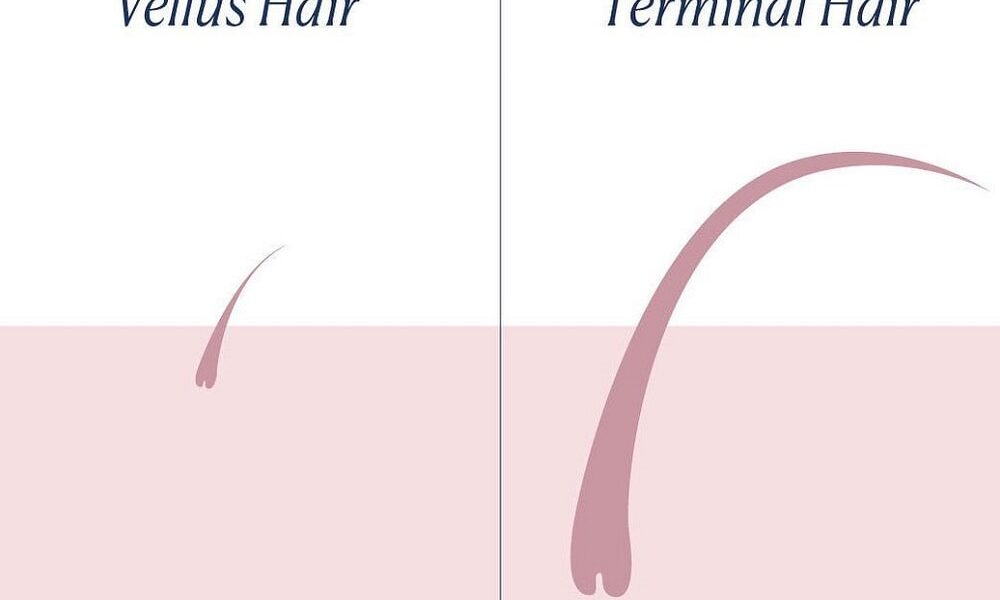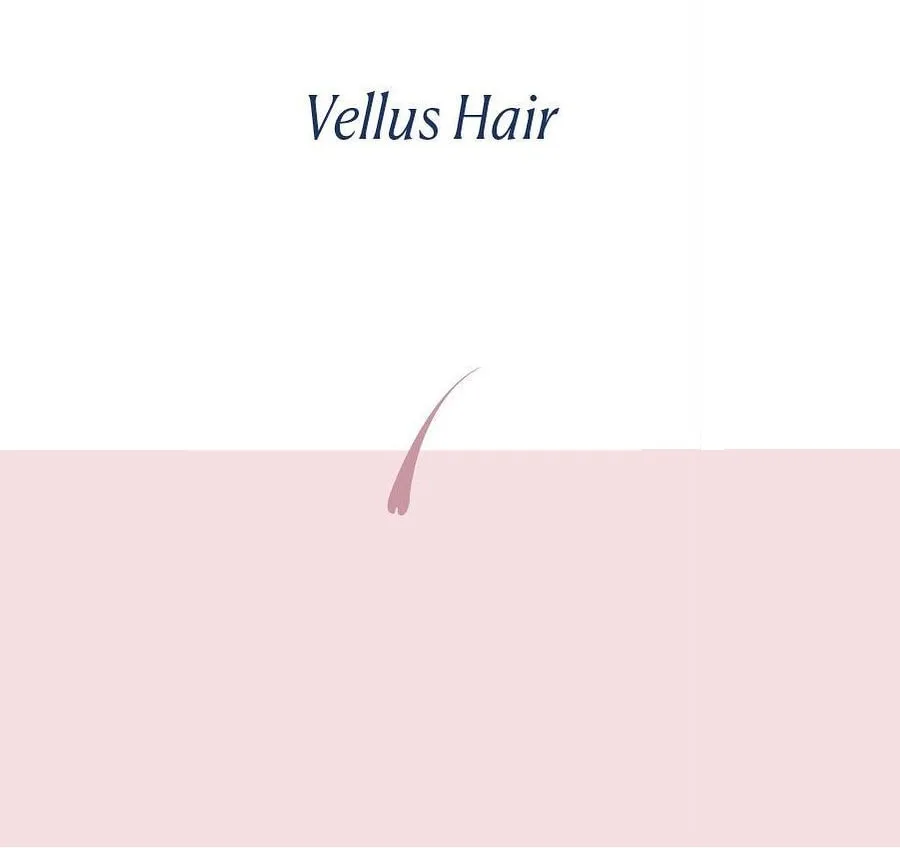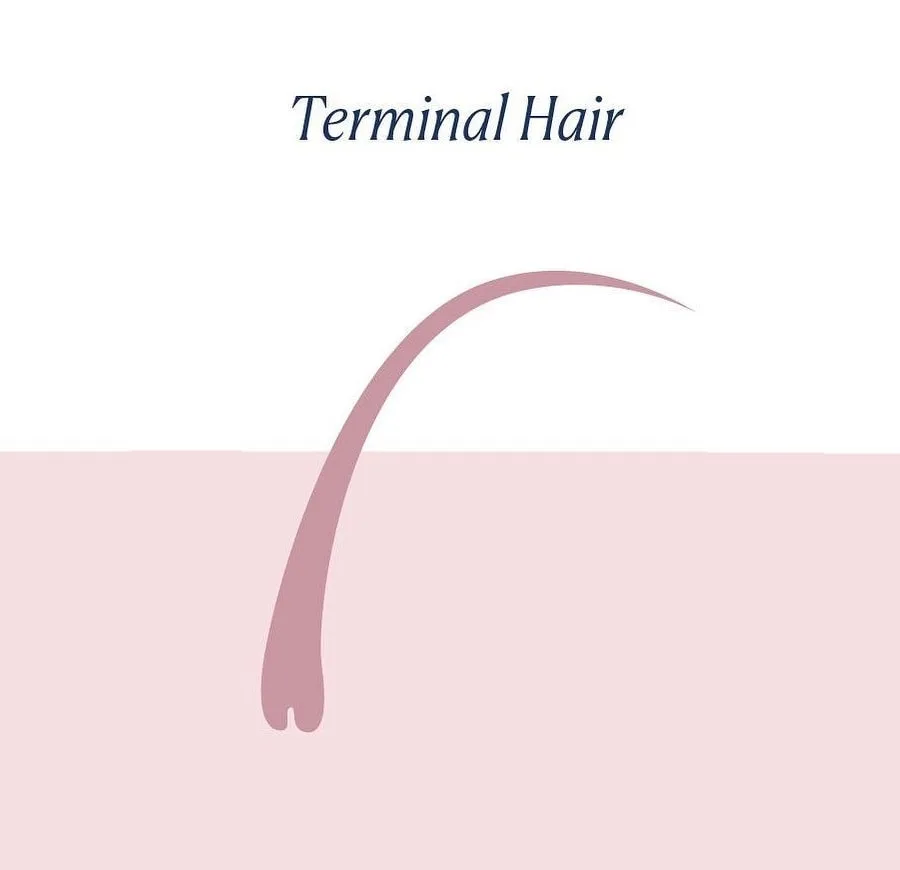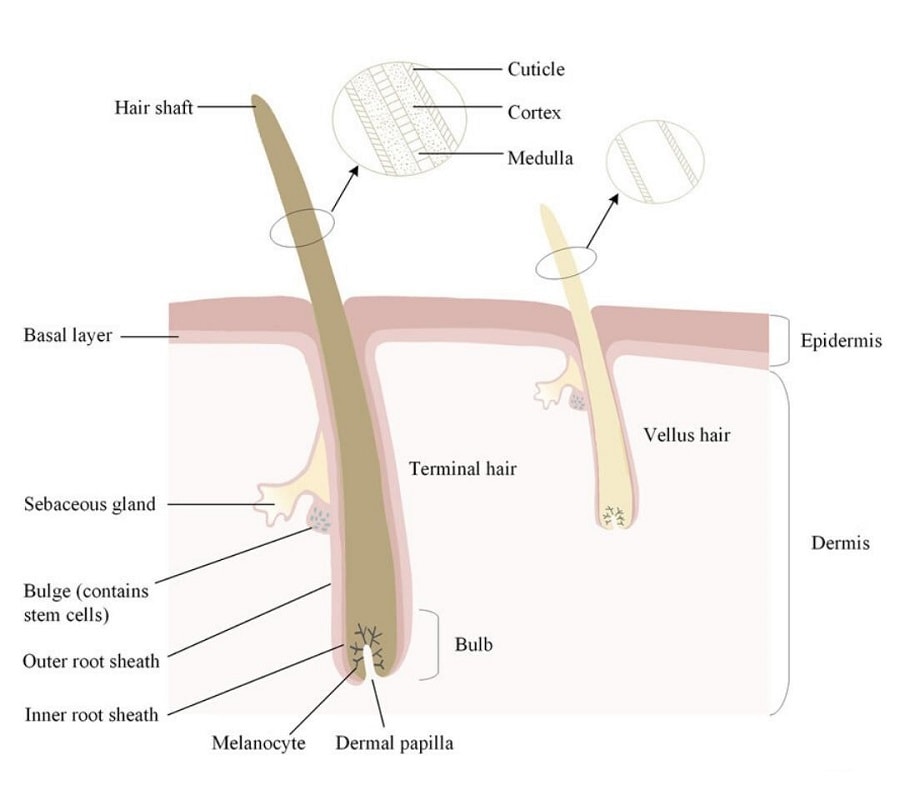
What is the difference? – HairstyleCamp
You may not be familiar with the terms “terminal hair” vs “vellus hair”. You may have encountered one and not the other. But what are these hair types?
What is terminal hair vs vellus hair? Let’s get into the differences between these two types of hair that everyone has on their body.
What is Vellus Hair?

At the most basic level, Hair and loss is the hair we have on our body that we sometimes refer to as a “peach peeler” around our main hairline.
Volus hair also includes hair on our body, light hair, usually blonde or light brown, hair that covers the arms, legs, midsection, and even the fingers and toes.
What is a hair terminal?

Terminal hair is the hair that grows from your scalp, with the exception of peach fuzz. This also includes armpit hair and pubic hair once puberty is complete.
Terminal hair can also grow on the face. A man’s beard or stray hairs on the upper lip or chin in women are forms of terminal hair.
Eyebrows and eyelashes are also considered terminal hair. And chest hair is terminal hair, as is the hairline that many people have from their belly button to their pubic area.
What do vellus hair and terminal hair look like?
Vellus hair is generally lower in pigment than terminal hair. It is shorter, not growing more than 5 to maybe 10 mm in length. Caucasian people usually have light brown or blond hair.
People with more pigmented skin can have vellus hair that ranges in color from light brown to dark brown. In women or people without facial hair growth, vellus hair is still present on the sides of the face, although it is colorless.
Basically every hair on the adult human body is vellus hair except for the hair found on the scalp, armpits, pubic area, navel up to the pubic line, eyebrows, eyelashes and facial hair such as beard and mustache.
Terminal hair goes much deeper into the skin; You may have noticed that plucking your eyebrows or pulling hair from your scalp is much more painful than losing a few hairs from your arms or legs. This is because terminal hair is rooted much deeper into your skin, which we will discuss later.
While the vulva hair is usually much less pigmented, and in some people, it is not noticeable, terminal hair is dark in color, especially for those with more melanin in their skin. People with very light blonde hair can have blonde scalp hair, eyebrows and eyelashes, but they are a minority over most of the world.
Most of the time, terminal hair is much more pigmented than vellus hair, and it appears on parts of our body that we would refer to as “hairy,” such as our beard, armpits, pubic area, and of course, our scalp.
Now, these generalizations don’t work universally—baldness affects about 1 in 1,000 people worldwide, and those people typically lose their terminal hair and most of their pubic hair.
Main differences between terminal hair and vellus hair

The main difference we have already discussed is color. Terminal hair, even in blonde people, is more pigmented than vellus hair. The texture of vellus hair is smooth and soft. Whereas terminal hair is thicker, leading to it being coarser and much more prominent than vellus hair.
Even if you could collect enough parchment hair to make it into a ponytail, the hair is so thin that it wouldn’t be able to stay in place.
The final hair is denser, which means more follicles produce hairs in a defined area than hair and gloss. It is also thicker (usually much) darker. Terminal hair starts as a “peach rash” on your scalp before it matures into terminal hair.
Only in a state of male pattern baldness does it then return to the hair of the vulva. In all other circumstances, terminal hair remains terminal hair. A terminal hair has follicles that reach twice as deep under the skin as the vulus hairs.
Vellus Hair Vs. Terminal hair comparison chart
| differences | Vellus hair | terminal hair |
|---|---|---|
| texture | Smooth, soft, no blunt edges | Coarser, thicker, can range from soft to rough |
| Place | Face, ends of scalp (baby hair/peach poise), arms, legs, stomach, toes and fingers | Facial hair (beards, mustaches), armpits, pubic area, eyebrows, eyelashes, scalp |
| Color | Ranging from colorless to blond, brown and sometimes black | All possible hair colors are found around the world, but much more pigmented than Velos |
| density | variable | Three to four hairs per follicle: average; Five to six hairs per follicle: high |
| diameter | less than 0.03 mm | More than 0.03 mm, usually more than 0.06 mm |
| follicle depth | Retinal dermis (0.6 mm from the skin surface) | Sebaceous gland (2-5 mm from the skin surface) |
In short, your scalp, eyebrows and eyelashes are terminal hair at birth. Everything else is hair and loss until puberty.
After that, vellus hair in your pubic, armpit and facial area (in some cases) becomes terminal hair and stays that way unless baldness develops. Most of the hair on your body is cuticle hair, but the hair you groom and style is usually terminal hair.